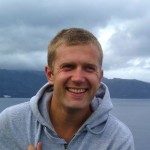Link to HAL – hal-02914322
Link to DOI – 10.1109/LSP.2020.3003821
IEEE Signal Processing Letters, 2020, 27, pp.1085-1089. ⟨10.1109/LSP.2020.3003821⟩
We introduce a novel paradigm for statistical analysis of spatial signals, applied to colocalization studies in bioimag-ing. Quantitative assessment of the spatial colocalization of different molecules in microscopy provides important functional information on cellular processes. By reducing objects (molecules or cluster of molecules) to their position (points), existing methods are predominantly restricted to point-based analyses, and scale poorly to applications involving large, asymmetric and complex-in-shape objects. We address this issue, and propose a statistical model for shape-based colocalization analysis. Our solution is a generalization of the Ripley’s K-function for arbitrary shapes, and provides a method to statistically interpret the coupling of molecules to biological objects which are implicitly represented via level set embedding. Compared to the state-of-the-art, our solution is efficient and generic, and establishes the theoretical basis for an one-fits-all approach to tackle the heterogeneous challenges in robust interpretation of molecular association in biology. The efficacy of our method is established via synthetic simulations, and a practical application is also described to measure the statistical accumulation of synaptic molecules’ spots near the cell’s boundary of cultured neurons.




